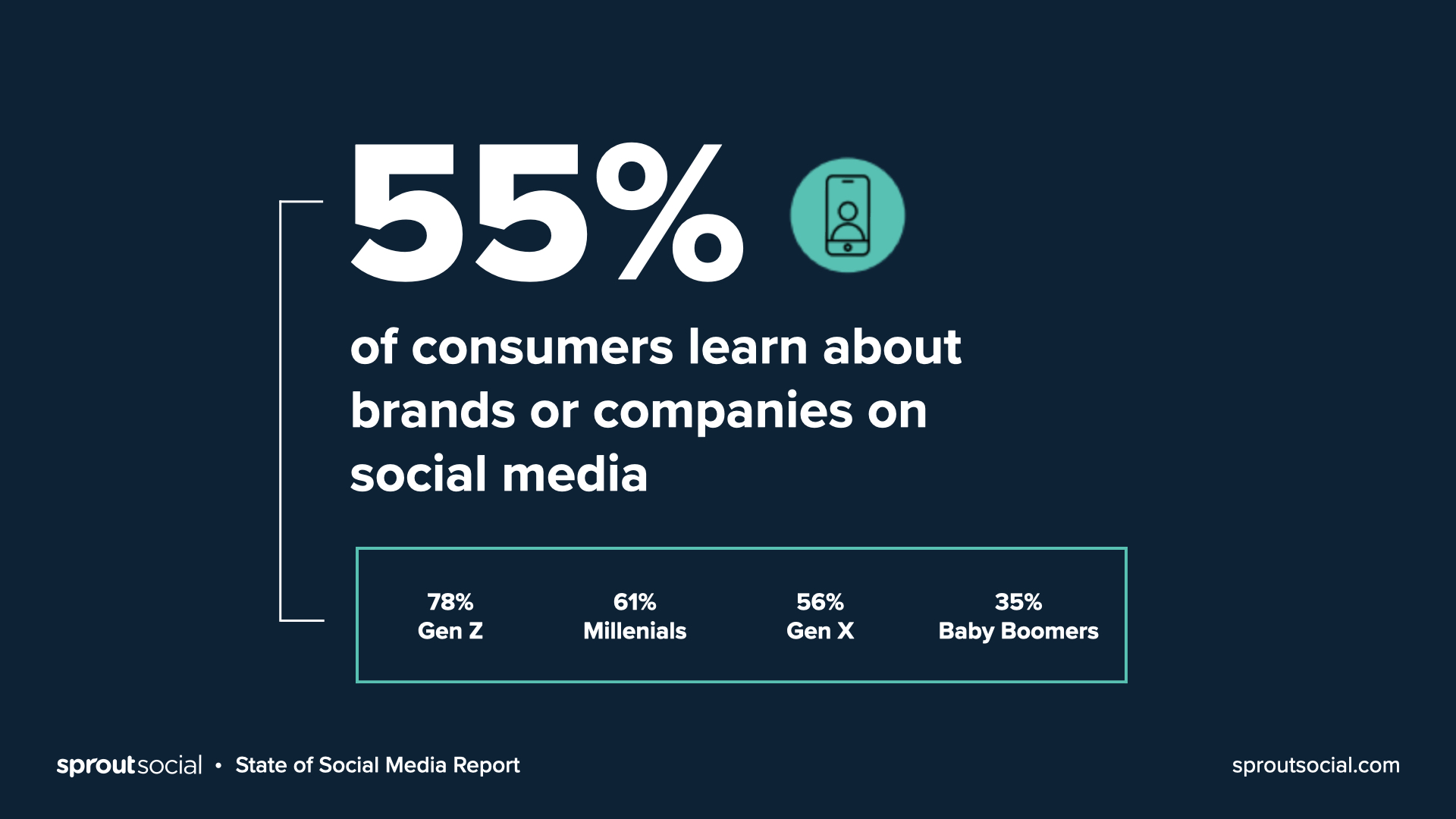Blog 1: The Role of Social Media in Sustainable Entrepreneurship

The rise of sustainable entrepreneurship has paved the way for innovative solutions that address environmental problems while still turning profits. Entrepreneurs who adopt this business model aim to develop environmentally friendly products or services that meet societal needs. Social media platforms have emerged as an effective means of promoting such ventures while communicating with customers directly. Hence, we drew inspiration from exploring how social media serves valuable insight into sustainability-based brands. Sustainable entrepreneurship has gained increasing attention over the years but it also poses some complex challenges for both new and existing ventures alike. Nonetheless, social media, when applied effectively by entrepreneurs can significantly help overcome such difficulties as they pursue their goals. This post seeks to highlight how critical it is for sustainable entrepreneurs today in utilizing social media platforms as a channel through which they can promote eco-conscious businesses actively. Thus, aspiring business owners or those already running firms will learn practical ways of integrating sustainability into all aspects of their venture.
Going Viral for Good
The term social media platforms refer to online tools designed for users to create or exchange information and content. By offering various opportunities for promotion and interaction with customers alike, they support sustainable entrepreneurs in advertising their eco-friendly businesses. Reaching out to a wider global audience and effectively promoting sustainable practices using social media is one way to leverage it for enhancing the visibility of eco-friendly products or services. Building brand awareness and establishing a dedicated consumer following are possible benefits of utilizing social media. Investigations carried out by Hootsuite indicate that the mean duration of use for Instagram among its customers is approximately 11.7 hours every month. A vast audience can be reached by entrepreneurs who post visually appealing images of their eco-friendly products and services, which may lead to business growth. Using social media for education on sustainability is crucial to sustainable entrepreneurship. By creating informative content like blog posts or infographics that explain their eco-friendly practices—such as using renewable energy sources and adopting circular business models—a sustainable brand can raise awareness among its customers. Moreover, social media can be used to create interactive communities where sustainable entrepreneurs can engage in conversations with potential customers or receive feedback from existing customers. Sustainable brands like Allbirds use social media to raise awareness about eco-consciousness. By effectively using social media, this sustainable footwear company has amplified its commitment to creating eco-friendly products. Through showcasing its use of natural materials and efforts towards reducing carbon emissions in the production process on social media channels, the company exhibits its commitment to sustainability. By launching campaigns on Instagram and Twitter with the hashtag #weareallbirds, the brand aims to encourage customers to share their sustainable practices as well as eco-friendly lifestyle choices.


Boosting Your Eco-Business
By utilizing social media platforms effectively and efficiently, sustainable entrepreneurs can reap multiple rewards, which will contribute towards the expansion of their green businesses. By providing access to a worldwide audience, social media platforms offer an advantage that leads to increased exposure. Statista conducted a study that discovered that Facebook has over 2.96 billion monthly active users. This presents an enormous market for sustainable entrepreneurs to tap into.
Social media provides an effective platform for businesses to showcase their eco-friendly offerings and raise brand awareness among a vast number of people. Furthermore, social media is a cost-effective marketing tool that can save sustainable entrepreneurs significant resources that would have been spent on traditional advertising. By taking advantage of social media outlets, entrepreneurs can aim for particular customer segments and alter their marketing plans based on engagement metrics. Social media provides an additional benefit of enhanced communication with stakeholders. By effectively utilizing social media platforms, sustainable entrepreneurs can communicate with their customers in a timely manner while receiving valuable feedback. Sustainable entrepreneurs can leverage social media channels to connect with multiple stakeholders, such as employees or shareholders, while also sharing updates on their business activities. Sustainable entrepreneurs who make good use of social media platforms can gain multiple advantages, such as enhanced visibility and affordable promotion, in addition to better interaction with stakeholders.
The Uphill Battle of Sustainable Entrepreneurs
Sustainable entrepreneurs encounter unique challenges while attempting to balance the planet’s needs with economic profit. The profitability-sustainability tension creates significant hurdles for sustainable entrepreneurs, who must contend with resource scarcity as they strive to build viable business models. Complicating this issue is the fact that consumer awareness about environmentally conscious goods and services remains lacking, exacerbating hurdles for such enterprises. A Forbes report in 2022 revealed that consumers across all generations are now willing to spend more on sustainable products. Sustainable entrepreneurs often face difficulties obtaining funding because of the misconception that eco-friendly initiatives have lower returns on investment. Furthermore, since many sustainable startups focus on social and environmental impacts, they may struggle to find investors who share their values. Startups can look for funding from impact investors, who prioritize social and environmental returns alongside financial returns. Additionally, sustainable entrepreneurs must find a balance between making profits and preserving the environment, as they can sometimes conflict with each other. To overcome these challenges, sustainable entrepreneurs can benefit from education and awareness campaigns to raise understanding and appreciation for sustainable products and services. Government regulations can provide measures that lower entry barriers while increasing support mechanisms, giving this developing industry the necessary backing it needs. In specific circumstances where collaboration between public servants or private corporations would be favorable when researching eco-friendly solutions.
A Student’s Perspective

Sustainability is an essential issue for university students, and the content above delves into how social media can play a role in promoting sustainable entrepreneurship. Sustainable businesses that employ environmentally friendly products or services while making profits have risen alongside social media usage, providing them with ample opportunity to fulfill societal needs. As students of higher education institutions ourselves, we are also quite capable of utilizing communication networks to drive home messages supporting sound business practices and championing sustainability both within our organizations’ walls today and in entrepreneurial ventures tomorrow. Being informative content creators who engage meaningfully through dialogue will allow us not only this privilege but access to broader audiences so they too may take part in living green lifestyles resulting from increased environmental consciousness garnered via educational campaigns. Therefore, student contributions strengthen entrepreneurs abilities to fabricate solutions towards combating climate change without neglecting profit margins.
References
El-Gohary, H., Sultan, F., Alam, S., Abbas, M. and Muhammad, S. (2023). Shaping Sustainable Entrepreneurial Intentions among Business Graduates in Developing Countries through Social Media Adoption: A Moderating-Mediated Mechanism in Pakistan. Sustainability, 15(3), p.2489.
Lawler, B. (2022) What is sustainable entrepreneurship?: DSM: Digital School of Marketing, DSM | Digital School of Marketing. Available at: https://digitalschoolofmarketing.co.za/blog/what-is-sustainable-entrepreneurship/ (Accessed: 01 May 2023).
Newberry, C. (2023) 34 Instagram stats marketers need to know in 2023, Social Media Marketing & Management Dashboard. Available at: https://blog.hootsuite.com/instagram-statistics/ (Accessed: May 2, 2023).
Petro, G. (2022) “Consumers Demand Sustainable Products And Shopping Formats,” Forbes, 11 March. Available at: https://www.forbes.com/sites/gregpetro/2022/03/11/consumers-demand-sustainable-products-and-shopping-formats/?sh=44919a5f6a06.
Sustainability Guide & Practices (no date) Allbirds. Available at: https://www.allbirds.com/pages/sustainable-practices (Accessed: May 2, 2023).
Blog 2: Exploring Gender Equality in the Education System
Inequalities based on gender have far-reaching consequences on learning experiences and overall academic outcomes for students. Despite significant progress made towards achieving gender parity globally, there remain several impediments which hinder equitable access to education between boys and girls. Education is recognized as an enabler of economic growth and improved living standards. Governments must make deliberate efforts to close current disparities so that both genders have equal opportunities from their educational journeys. Exploring the impact technology can have on reducing gender-based inequalities in education requires us first to understand why gender equality is essential in academic settings. By providing valuable insights into this complex subject matter and encouraging our audience to take concrete steps towards fostering inclusivity, our piece aims to further the conversation around building an equitable learning space.

How Gender Equality is Revolutionizing Education
Gender parity in education generates multiple advantages that go beyond the four walls of a classroom. Several benefits, such as augmented economic growth and lowered poverty levels have been associated with gender equality. In agreement with The European Institute for Gender Equity’s report, reducing discrepancies between male and female participation in STEM subjects could result in a significant improvement up to 610-820 billion Euro by 2050 through GDP rise alone. Moreover, promotion of equal opportunities among genders within the academic sphere can lead to higher degrees of social progressions while further contributing positively towards national health outcomes on average throughout society.


Nations such as Finland have made remarkable progressions in advocating for gender equality within the educational system, heavily emphasizing non-discriminatory teaching regimes and curricula. This has led Finnish learners to consistently achieve some of the highest global ranks in science, math and reading fields. The nation’s education framework is well-regarded due to its comprehensiveness and inclusive nature while at the same time being recognized for its success in eliminating gender disparities with regards academic success levels across both sexes alike.
Contrarily, gender-based educational gaps have wide-ranging and significant effects, especially on women. Limited career opportunities and lower salaries are only a few of the negative effects of gender inequality in education. Girls are more likely to drop out of school and be unable to enrol in further education in many parts of the world, which decreases their chances of finding employment and lowers their potential earnings.
If you desire to expand your knowledge regarding the influence of gender equality on education and measures being implemented to cultivate an all-embracing atmosphere, might I suggest perusing this write-up by the World Bank and scrutinizing this report from the United Nations?
Powerful Strategies for Change
Governments throughout the globe have realized the significance of endorsing parity in education and implemented a range of techniques to achieve this aim. One technique that has been extremely effective is promoting girls’ schooling, especially in regions where they are conventionally disregarded as learners. In 2015, for instance, India inaugurated its ‘Beti Bachao Beti Padhao’ program with an objective to elevate women’s status by enlarging their accessibilities towards quality learning through public assistance efforts made available at various levels within society. Financial aid programs such as scholarships too played a pivotal role in ensuring gender equity across educational institutions; Bangladesh’s Female Secondary Stipend Program serves testimony here – it helped boost enrollment figures whilst cutting down on gender gaps considerably.

One crucial approach to combat gender biases in education is through revising textbooks and curricula. The National Science Museum has supported several programs geared towards creating impartial STEM-related courses, resulting in a surge of girls pursuing careers in the field. Communities must get involved by partnering with community-based organisations in order to promote equity within educational institutions. In Uganda, where cultural practices often hinder girl-child education attendance rates, CBO-government partnerships are empowering families and local leaders to shift their attitudes about women’s schooling opportunities ultimately leading increased enrollment numbers for young girls.
Tech to the Rescue
In recent years, technological advancements have opened up avenues for effectively closing gender disparities in education. The emergence of online learning has made it an alternative option capable of bridging the gaps caused by limited educational resources in remote or underserved regions. Although the usage of programs on smart gadgets and computers has proven remarkably beneficial, several girls from rural or low-income backgrounds still face challenges accessing them consistently due to a lack of affordability and technological infrastructure limitations.
However, many nonprofit organizations have taken advantage of these struggles and aided disadvantaged girls through technology-driven platforms. The Malala Fund’s initiative to promote girls’ education through the utilisation of online learning opportunities and digital tools has so far produced some impressive outcomes. Technology-enabled programs have helped narrow down educational gender divides, pointing towards a brighter outlook for equality between genders. It is important to note that while technology goes a long way toward this objective, it alone is insufficient when it comes to tackling gender inequalities in education; there’s still a requirement to provide access to other critical infrastructure such as electricity supplies and dependable web-based services. Gender inequality is still prevalent in several sectors today, including education. However, with technological advancements taking shape day-to-day, exploring their potential to promote gender parity in learning will deliver impactful results. Innovative methods like virtual reality-based practical sessions allow both genders equal opportunities to showcase their abilities and learn new subjects without any preference or bias. Moreover, promoting digitization ensures better accessibility to quality education for women, who lag behind due to social norms and biases.
Don’t Stop Now
Gender equality in education is essential for social progress and economic growth. To ensure fairness, governments should initiate targeted measures to bridge existing gaps between boys’ and girls’ academic experiences. Sustainable entrepreneurs should leverage social media channels to introduce transformative changes targeting female learners. To create an equitable and inclusive world, we must create fair conditions for all individuals across levels, from access to education, healthcare facilities, and employment opportunities to political rights without discrimination based on race or color. Our aim should be to seek diversification within social systems by breaking down existing barriers.

References
Casad, B.J., Franks, J.E., Garasky, C.E., Kittleman, M.M., Roesler, A.C., Hall, D.Y. and Petzel, Z.W. (2021). Gender inequality in academia: Problems and solutions for women faculty in STEM. Journal of neuroscience research, 99(1), pp.13-23.
Parmar, S. and Sharma, A. (2020) “Beti Bachao Beti Padhao Campaign: An Attempt to Social Empowerment,” Journal of Critical Reviews, 7(13). Available at: https://doi.org/10.31838/jcr.07.13.212.
Quality Inclusive Education (no date) Ministry for Foreign Affairs. Available at: https://um.fi/quality-inclusive-education (Accessed: 03 May 2023).
Unesco (1970) Gender Equality and Education, UNESCO.org. Available at: https://www.unesco.org/en/gender-equality/education (Accessed: 04 May 2023).

